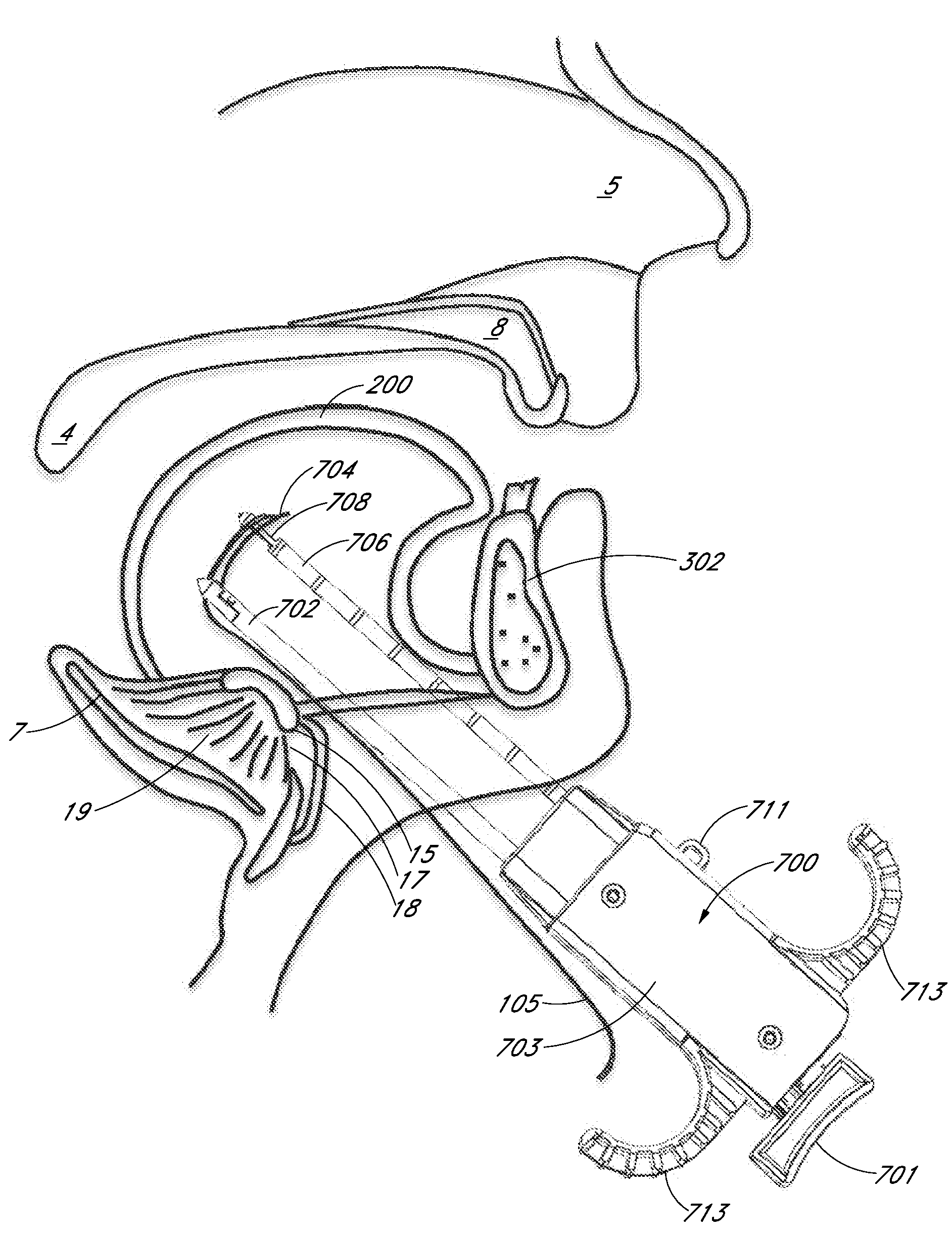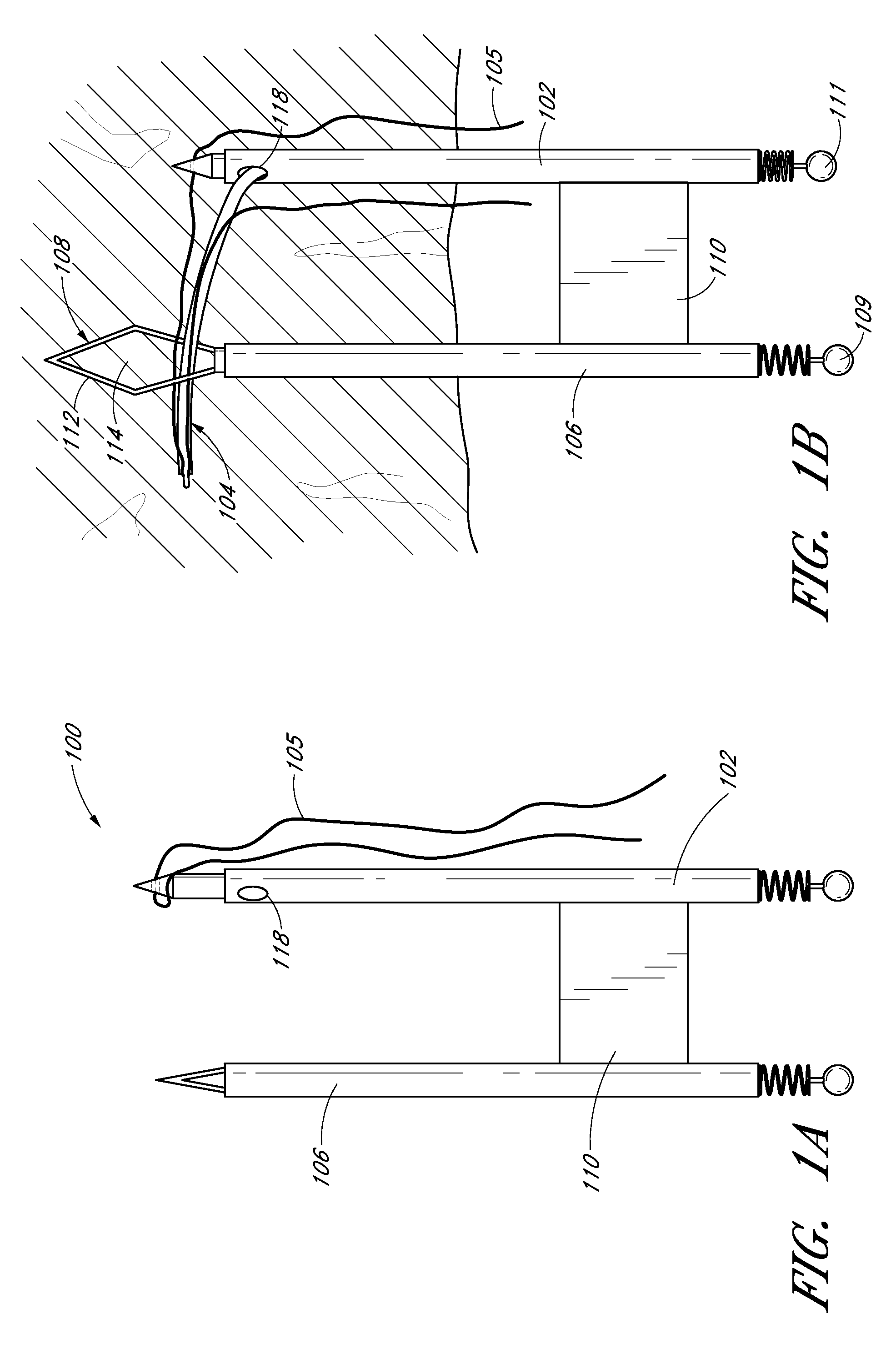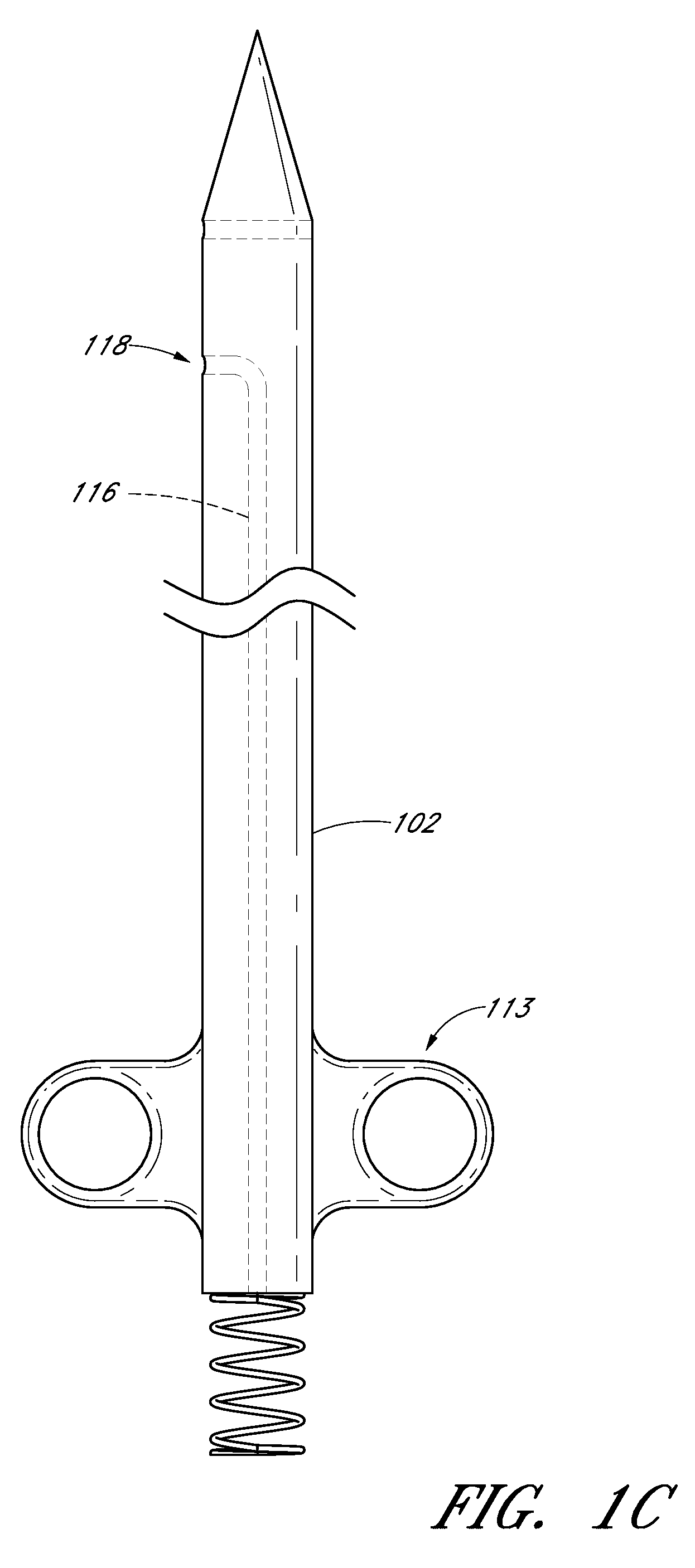Suture passer systems and methods for tongue or other tissue suspension and compression
a technology of suspension and tissue, applied in the field of suspension and tissue compression, can solve the problems of limiting the position of the surgeon, affecting the quality of the patient's sleep, and affecting the patient's sleep quality, and reducing the risk of airway obstruction during sleep
- Summary
- Abstract
- Description
- Claims
- Application Information
AI Technical Summary
Benefits of technology
Problems solved by technology
Method used
Image
Examples
Embodiment Construction
[0093]In one embodiment, disclosed is a suture passer system and method for passing a suspension line, such as a tether, tether loop, suture or suture loop through tissue to suspend or compress the tissue. The term “suture” as used herein, unless otherwise specified or limited, is intended to have its ordinary meaning and is also intended to include all structures, including any of the aforementioned or later-described examples, that can be passed through tissue using the devices described herein. One example of tissue that can be suspended or compressed is the genioglossus muscle of the tongue. Such a system could be useful in treating a wide range of conditions, including, for example, obstructive sleep apnea. Other non-limiting examples of tissues that can be suspended or compressed include using systems and methods as described herein include facial soft tissue such as in the forehead, brow, mid face, jowls, lateral face, lips, eyelids, nose, and neck to treat wrinkles or asymme...
PUM
 Login to View More
Login to View More Abstract
Description
Claims
Application Information
 Login to View More
Login to View More - R&D
- Intellectual Property
- Life Sciences
- Materials
- Tech Scout
- Unparalleled Data Quality
- Higher Quality Content
- 60% Fewer Hallucinations
Browse by: Latest US Patents, China's latest patents, Technical Efficacy Thesaurus, Application Domain, Technology Topic, Popular Technical Reports.
© 2025 PatSnap. All rights reserved.Legal|Privacy policy|Modern Slavery Act Transparency Statement|Sitemap|About US| Contact US: help@patsnap.com



